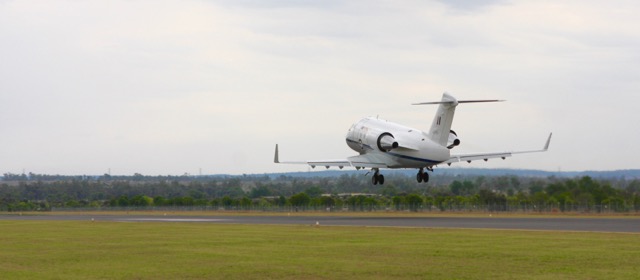
Posts about stuff relating to airports

(UPDATED) COVID-19 Bird Strike Update #1
UPDATE: What I thought was happening with wildlife strike rates during the COVID-19 downturn was not quite the case. I had a little issue with the time taken for reports to be included in the FAA Wildlife Strike Database and thankfully, this issue was picked up by a helpful colleague. See the details within.
Image credit: Azim Islam (via Pexels)


"Obvious Risk" Strikes Again!
Actually, it hasn’t. In fact, it is the opposite.
In today’s article, I’m going to discuss a case where the risk has been deemed “not obvious” and the defendants have had to pay up. The defendants in this case are the airport operator, the aircraft operator and the ground handler. There is also some complex discussion on shared liability that is, despite its potential boring-ness, important to understand.

Better Safety Risk Management: Uncertainty & Decisions
A lot of us have been doing aerodrome safety risk management for a while now. In that time, I’ve made a lot of mistakes and that means, hopefully, that I have learned a bit about risk management. So, I’d like to share some of my best lessons from being a regulator and practitioner of safety risk management over that time.
Image credit: Taryn Elliot via Pexels

Accident Review: Pasadena PD Helicopter Collision
This is not a particularly famous accident by name but you may have seen the footage of the incident at some point in the last couple of years. I saw the CCTV video again recently and what followed in the comments was a bunch of armchair “experts” pontificating on the need for better situational awareness or less complacency or some other equally banal observation directed at the pilot of the landing aircraft.
Image credit: (cc) Jobs for Felons Hub

Heads Up: Watch Out for Wildlife (Updated)
No need to rehash the current situation, aviation is hurting and traffic numbers are going down.
So why post about wildlife strikes? With traffic down, we should see less strikes, shouldn’t we? Maybe not…
Over the last couple of months, I have been doing some deep diving into the FAA’s wildlife strike database. It is an aerodrome safety nerd’s paradise. There is so much data and a little crunching can reveal some very interesting things.
I want to share one of these insights with you in light our current circumstances.
Image credit: (cc) Quintin Gellar on Pexels

Listening to Real-World Radio Communications
I have a confession to make. When my family is travelling or even just late at night after they go to bed, I will cue up video after video of …
Real-world air traffic control recordings.
They provide great insight into accident and incident response - both good and bad. Or sometimes, they just provide some welcome comic relief in the most avgeek kind of way.
Image credit: (cc) Guilherme Rossi on Pexels

People as Products: The Pitfalls of Six Sigma Passenger Processing
Devotees to the Six Sigma and/or Lean concepts will often adopt a “manufacturing mindset” and set about reducing variation and wastage in as many of their business processes as they can. Airport operations are no different and passenger processing is one the most operational focused areas to target under these concepts.
Almost five years ago, I was learning a great deal about Lean, in particular, but I was struggling with applying the concepts to the bulk of the airport operational environment. And then it dawned on my that the passengers were the product and moving them from curb to cabin (and vice versa) was our production line.
Whilst, from a theoretical point of view, this realisation opened up a lot of options for me, there are some dangers in forgetting that people are still people and that they comes in an almost infinite variety of configurations.
Image credit: (cc) Negative Space on Pexels

Turning your Safety Records Un-Dead
I was reading Bram Stoker’s Dracula to my son the other night and we came across a funny little passage that I felt could be a great record-keeping lesson for airport operators. For me, the whole context was ripe for learning because, up until that point in the book, I would have considered this character’s actions, completely reasonable, if not, meticulous.
So what can the good Count Dracula teach us about good record keeping? Let’s find out…
Image credit: Levin Corbin Handy (via Wikipedia)

Visualising Jet Blast
Sometimes circumstances align to create a video that gives a perfect opportunity to see something that is usually not visible. In this case, it was a good dusting of dry snow, an aircraft parking in the right spot near a guy in the terminal also in the right spot at the right time.

Risk Evaluation Series
I have never really liked risk assessments that involve some vague calculation of consequence and likelihood. I have witnessed, and perhaps been involved in, many arguments about where to stick some potential or even past disaster into a limited matrix.
A couple of years ago, I had a whinge/thought experiment on an alternative method of risk evaluation. I enjoyed the use of the term Probability-Impact Graph, rather than Likelihood-Consequence Matrix, to create a little theme - see if you can guess what it was.
I’ve repackaged these posts and a follow-up post for renewed consumption below. Each image is actually a link to the post.

Accident Review: Asiana Flight 214 Emergency Response
I recently wrote about emergency exercises and their role in improving your airport’s emergency plan. Exercises are not the only way to learn and to identify opportunities for improvement. Unfortunately, from time to time, the aviation industry suffers an accident and emergency response agencies kick into action. Even though these emergencies might occur at an airport far, far away, they can still provide worthwhile lessons.
In some cases you might learn about plan deficiencies, equipment malfunctions and human errors through informal channels and industry connections. And in a few cases, there might be a formal investigation covering the emergency response to a major accident. The NSTB report into the Asiana Flight 214 crash is one such investigation.
Image credit: NTSB

Better Emergency Exercises: Purpose, Planning & Failing Willingly
It takes a great deal of work to plan and execute an airport emergency exercise. They require hundreds of people-hours to organise with meetings, discussions, working groups, control plans and reviews. Approvals go up and down multiple reporting lines and resources (people, equipment and money) are committed.
And yet, I think the hardest part of this process, it that it all leads to everyone, and especially the aerodrome operator, opening themselves up to critique. Each exercise should be designed to push the system and to result in some kind of failure. And after all that, we ask others to tell us what we did wrong and while we know that it is better to fail in an exercise, it is never easy to openly discuss your mistakes.
images credit: (cc) Brussels Airport (Flickr Account)

HBO's Chernobyl is a Must for Safety Nerds and Newbies
After Game of Thrones ended, many people wondered how HBO would survive without its flagship show. A couple of entertainment podcasts I listen to started talking about the new series called Chernobyl. As a safety nerd I was curious but didn’t have any way of seeing it where I currently live. Luckily, last month I found myself in an Airbnb in Sweden with access to an HBO account and I talked my wife into watching it with me.
I was already somewhat familiar with the disaster through university and other studies and I relished rounding out my knowledge in such an engaging way. But what really got my safety-nerd-receptors tingling was the underlying narrative and analysis of complex safety concepts such as latent failures, culture and accident investigation philosophy. In the first scene, in the first 30 seconds, I was hooked.
image credit: (c) HBO

Learning Lessons Through Investigations, Reviews & Analysis
Incident investigations have long been a key part of Safety Management System activities that a good airport operator is expected to undertake.

Many Masters: CASA not the only Agency Responsible for Safety
Just a short post today* about a recent High Court of Australia decision on the topic of which safety agency should prosecute safety breaches involving an aviation organisation preparing for a flight. Quick answer: it could be an agency other than the Civil Aviation Safety Authority (CASA) depending on the circumstances of the breach.
* I don’t want to became an aviation law blog. Really, I don’t but I do enjoy ready this stuff.

Creating a Free Airport Safety Reporting & Management System
Safety reporting is the life-blood of a modern safety management system. In the early days of implementation, a great deal of effort was (and still is) expended in increasing the reporting of safety events (incidents and other occurrences) and hazards. As an industry, we’ve discussed and debated no-blame and just cultures. We’ve promulgated policies and waved flags, telling our team members that we can’t manage what we don’t measure. And we’ve implemented safety occurrence reporting systems to capture all this information.
If we’ve been successful in these endeavours, we’ve then faced a new problem - what do we do with all these reports? A classic case of be careful what you wish for!

What is Urban Air Mobility? An Airport Operator Primer
Just in case you’ve missed the news recently, drones are a big deal. It’s a billion dollar business, disrupting traditional business models and, most importantly for airport operator, just plain disrupting business. And, as you can imagine, just following the news doesn’t give you a necessarily clear or complete picture of our potential future with these aircraft.
I’d like to jump in and look at one particular area of this phenomenon and it’s relationship to airports but before we do, I feel like it is necessary to scan the field and sort through some of the complexity.
Image credit: (c) Airbus

Accident Review: Aeroflot Flight 3352 Collides with Vehicles on Runway
Aviation accident are always devastating. They precipitate great suffering on those involved and those connected to the event. They are also learning opportunities and, as a discipline, accident investigation has been for a long time focussed on maximising this learning. With this in mind, I’m going to start a new category of posts looking at significant aircraft accidents and incidents that may have some lessons for airport operators. The first is a look at what happened to Aeroflot Flight 3352 inbound to Omsk Airport in the very early hours of October 11, 1984.
Image credit: (cc) Eduard Marmet

Bow-Tie Risk Assessment Series
A long time ago, I was deep into the bow-tie risk assessment methodology and over the years, I have never really left it. These posts were the basis of some great work I did a couple of years ago working with BHP Billiton which I will blog about in the near future.
Image Credit - (cc) Oleg Magni
